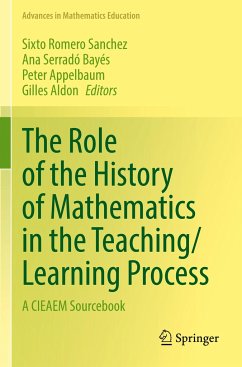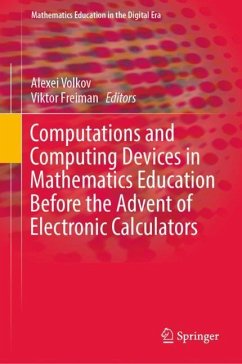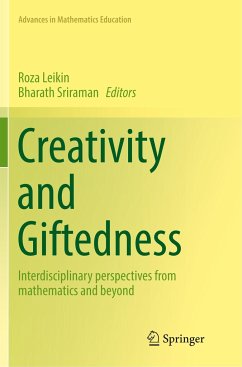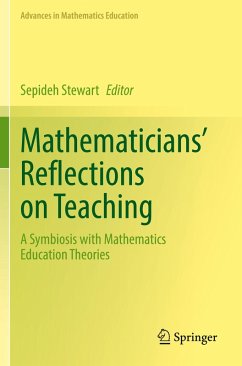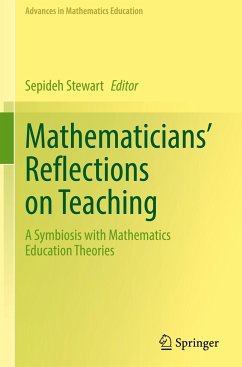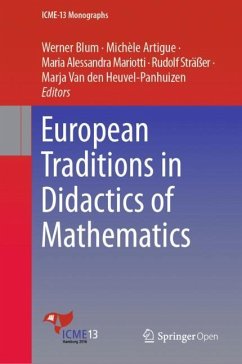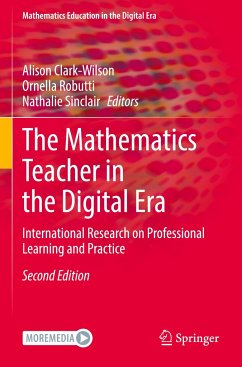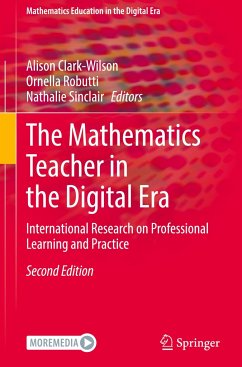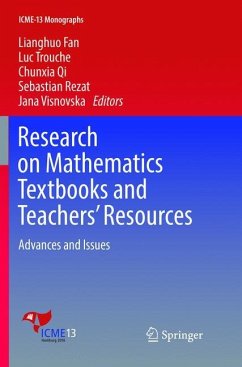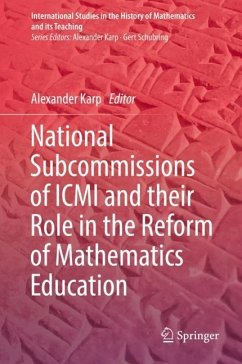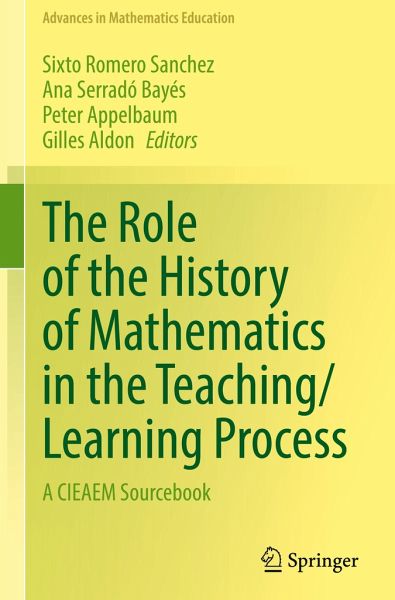
The Role of the History of Mathematics in the Teaching/Learning Process
A CIEAEM Sourcebook
Herausgegeben: Romero Sanchez, Sixto; Serradó Bayés, Ana; Appelbaum, Peter; Aldon, Gilles

PAYBACK Punkte
65 °P sammeln!
This volume presents multiple perspectives on the uses of the history of mathematics for teaching and learning, including the value of historical topics in challenging mathematics tasks, for provoking teachers' reflection on the nature of mathematics, curriculum development questions that mirror earlier pedagogical choices in the history of mathematics education, and the history of technological innovations in the teaching and learning of mathematics. An ethnomathematical perspective on the history of mathematics challenges readers to appreciate the role of mathematics in perpetuating conseque...
This volume presents multiple perspectives on the uses of the history of mathematics for teaching and learning, including the value of historical topics in challenging mathematics tasks, for provoking teachers' reflection on the nature of mathematics, curriculum development questions that mirror earlier pedagogical choices in the history of mathematics education, and the history of technological innovations in the teaching and learning of mathematics. An ethnomathematical perspective on the history of mathematics challenges readers to appreciate the role of mathematics in perpetuating consequences of colonialism. Histories of the textbook and its uses offer interesting insights into how technology has changed the fundamental role of curriculum materials and classroom pedagogies. History is explored as a source for the training of teachers, for good puzzles and problems, and for a broad understanding of mathematics education policy.
Third in a series of sourcebooks fromthe International Commission for the Study and Improvement of Mathematics Teaching, this collection of cutting-edge research, stories from the field, and policy implications is a contemporary and global perspective on current possibilities for the history of mathematics for mathematics education. This latest volume integrates discussions regarding history of mathematics, history of mathematics education and history of technology for education that have taken place at the Commission's recent annual conferences.
Third in a series of sourcebooks fromthe International Commission for the Study and Improvement of Mathematics Teaching, this collection of cutting-edge research, stories from the field, and policy implications is a contemporary and global perspective on current possibilities for the history of mathematics for mathematics education. This latest volume integrates discussions regarding history of mathematics, history of mathematics education and history of technology for education that have taken place at the Commission's recent annual conferences.





